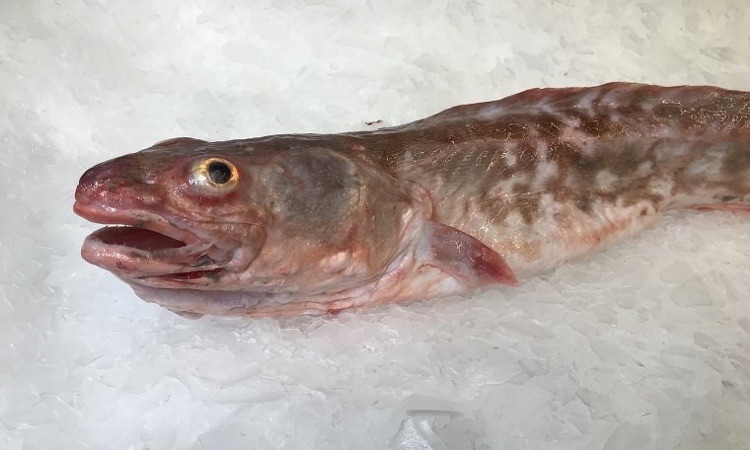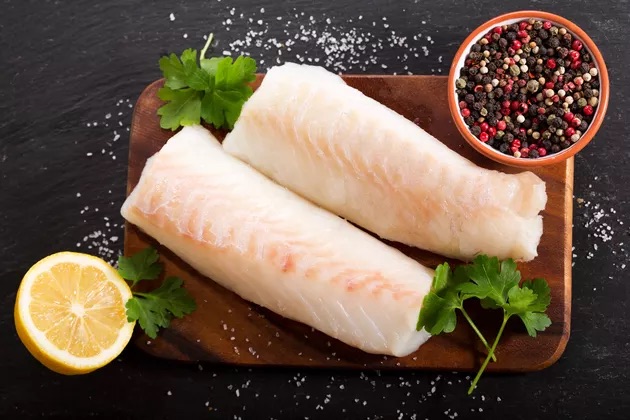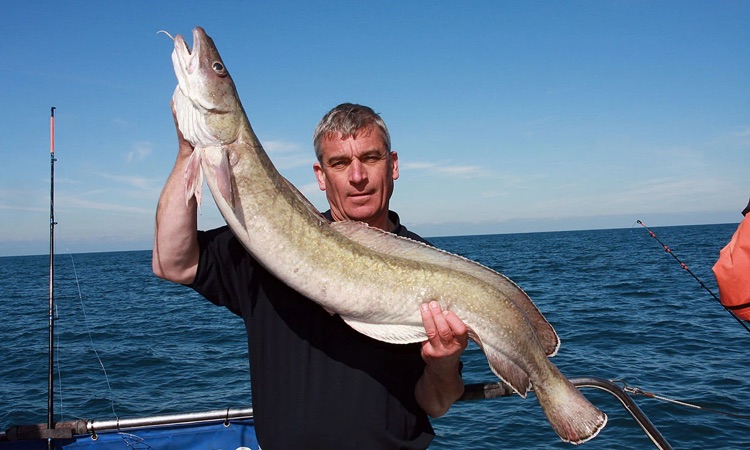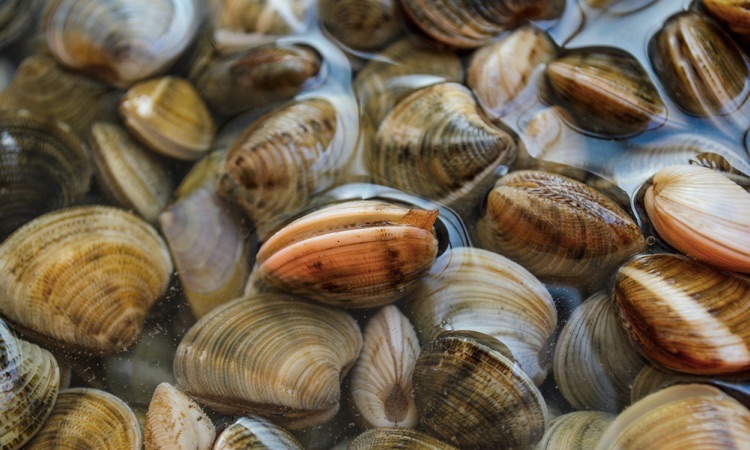The white ling, or common ling, is a delicious and underrated fish. Its meat is firm with a great texture, and its flavor is pleasantly strong.
Ling fish look like a cross between cod and conger eel, have strong bodies with long fins, large eyes, and mouths full of sharp teeth.
Like the telescope fish, they are rather ugly. These are the perfect attributes for hunting fish in deep water. They are commonly found in deeper offshore waters.

Ling Fish Habitat
Lings are found throughout the UK. They are more prevalent in areas closer to their major spawning ground near Iceland.
Their range not only spans across Europe, but also reaches into Scandinavian and Icelandic waters. You might even find them in small, isolated areas of the Mediterranean!
There are also just a few scattered locations off the coast of North America and on the southern tip of Greenland, both of which have small populations.
In mid-water, ling will search for anything they can catch. This includes herring and mackerel, as well as cod, pouting, and flatfish.
Though fish are by and large what lings consume, they will on occasion eat crustaceans like crab or lobster if these are accessible.
Ling are more commonly caught in the autumn and winter, but can occasionally be found spawning in the spring.
Female ling lay millions of eggs, and once they hatch, the immature ling will live in shallower water. They’ll do this for around a year before going to offshore waters where they’ll live for the rest of their lives.
Most often, you’ll find ling near rocky and broken ground. They’re a favourite target for boat anglers fishing around wrecks.

Commercial Value
The ling, which is closely related to cod, is an edible fish. While it’s not widely eaten in the UK, it’s more popular in other parts of Europe.
Ling is also cultivated on farms as a way to feed birds. It can be filleted and baked or fried, and it is utilized in processed fish products.
In European nations, the roe of ling (endothelial eggs) is a highly regarded delicacy, especially in Scandinavia. Ling are targeted by industrial trawlers using trawls, although long lines are utilized in some European fisheries.
Because ling is a deep water species, its swim bladder becomes severely damaged when it’s reeled up from the depths.
This means that boat-caught ling cannot be returned to the sea. Even though stocks of ling are generally believed to be in good shape compared to other species (cod or haddock), they’re still affected by overfishing.
There is no data on ling stocks according to the IUCN who classed them as a Data Deficient species.
Confusion with Other Species
Many fishermen are unaware that British and Irish rivers host two additional species of ling. The blue ling (Molva dypterygia) and the Spanish ling (Molva macrophthalma). Both are deep-water fish that are rarely seen by even boat anglers.
Despite its name, the lingcod (Ophiodon elongatus), which is found only on the western coast of North America, is not related to ling or cod found in UK waters.

Techniques to Catch Ling Fish
Ling are a deep-water species, seldom coming into water less than thirty metres deep. They are usually found around heavy and broken ground in depths down several hundred metres.
Ling are therefore a species mostly targeted by boat anglers. They hold this species in high regard for its fighting qualities and the relatively high chance of catching a large 20lb plus fish.
Generally, large fish baits and pirks are used to catch ling from boats. The British boat-caught record for ling (listed by the British Record Fish Committee) was set in 2013. It was a 67lbs specimen caught by angler James Isbister fishing off the coast of the Shetland Islands.
Confusingly, the International Game Fish Association lists the all-tackle world record for this species as a ling of 88lb 6oz caught by Gareth Laurenson also at the Shetland Islands in 2002. However, this is not registered as a British record.
While it is possible to catch ling from the shore, they will most likely be small and have not made their way into deeper waters yet. This fact is highlighted by the shore caught record being a fish that weighed 21lb 10oz. Less than one-third of the British boat caught record.
Ling are most inclined to take fish and crab bait intended for species other than themselves. Fishing from the end of a long pier or a rock mark is your best opportunity of catching a shore-caught ling.



